Stone
Both artificial and natural stone are used for finishing support pillars. The former is especially popular due to its ease of installation and a large selection of textures and shades. In addition to traditional facing slabs, manufacturers offer corner and rounded elements, making stone finishing suitable for structures of complex and non-standard shapes.
While it is easy to do the cladding with artificial stone yourself, it is better to contact professionals to work with natural stone. Here it is important to correctly match adjacent elements by color, and not to make a mistake with the adjustment of sizes when cutting. In order for the drawing to look harmonious, you will have to buy the material with a reserve.
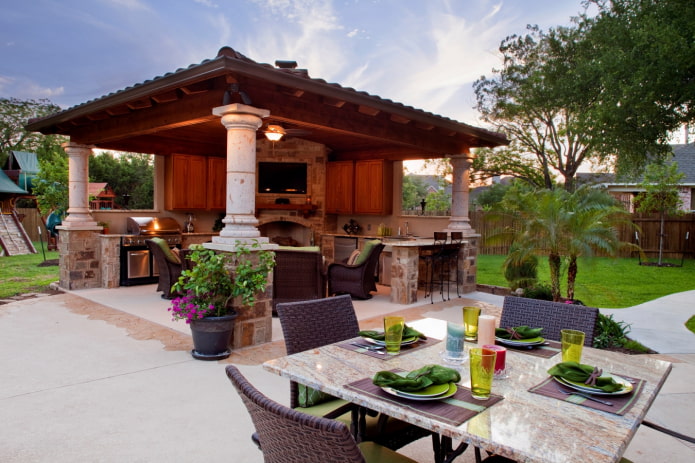
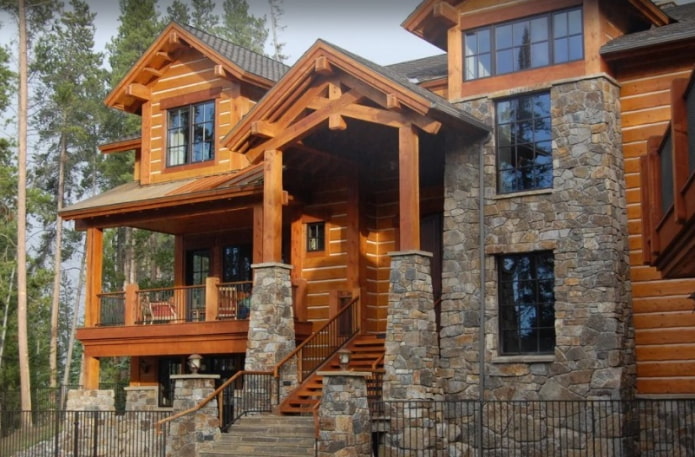
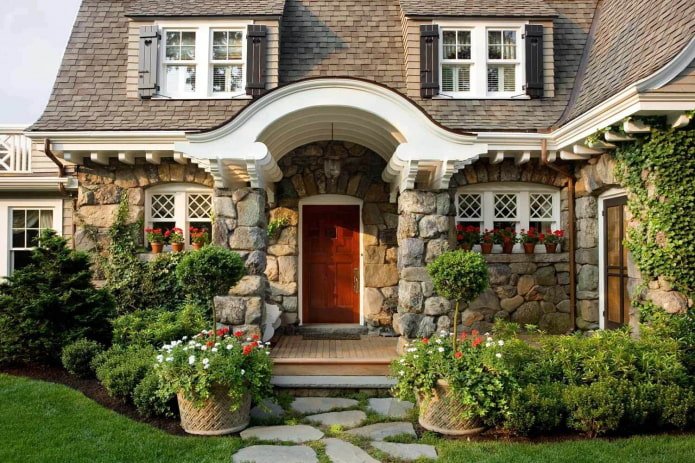
Brick
The easiest way to finish concrete supports – brick cladding. It is practical, easily combined with a plaster facade, exterior in styles from country to high-tech. If it is necessary to solve a purely decorative function, you can use clinker brick. If you need to strengthen the column, facing brick will do.
There are enough color solutions on the market. You can choose traditional red, chocolate, ivory, etc.
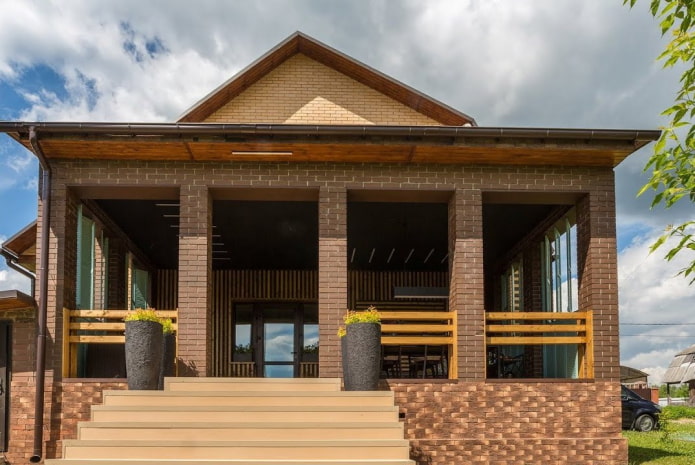
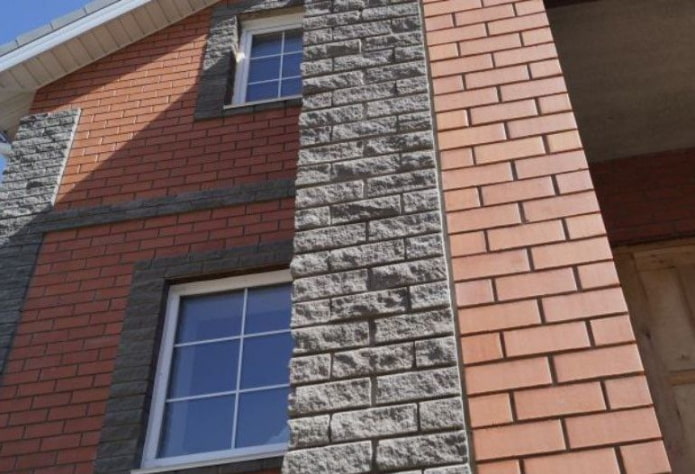
Decorative plaster
The most budget-friendly option for finishing concrete supporting structures is decorative plaster. It is easy to apply and relatively inexpensive. The variety of textures allows you to choose an option that harmoniously fits into the overall facade ensemble.
Among the disadvantages is a relatively short service life. Even when using facade plaster adapted to natural influences, the coating of the pillars will have to be renewed every 5-7 years.
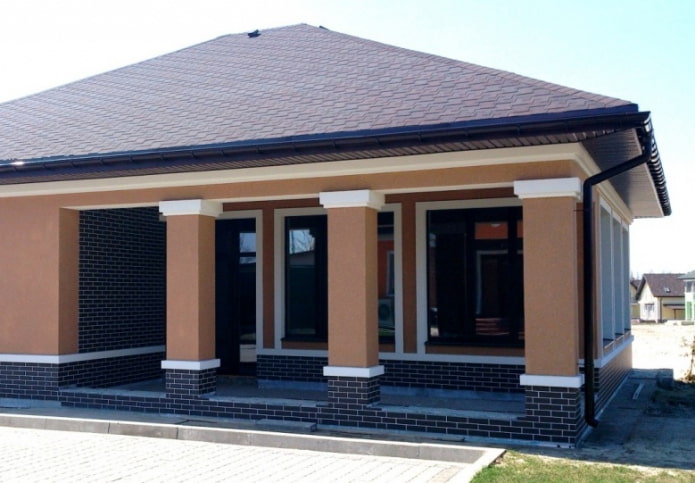
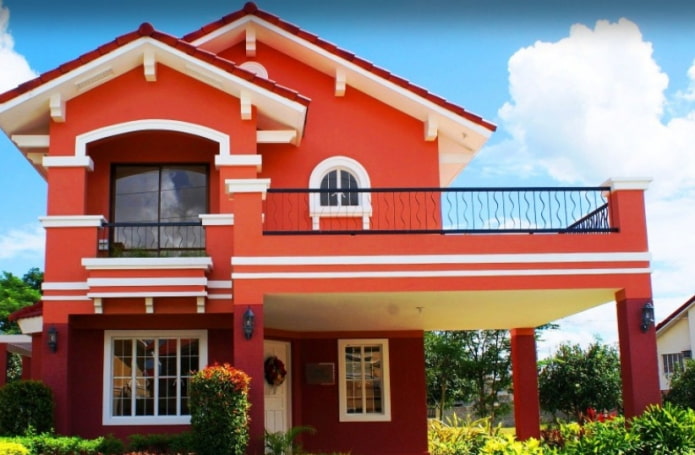
Tiles and porcelain tiles
Ceramic and mosaic tiles in exterior design are not the most common, but they are quite original. Compared to fairly expensive and heavy natural stone finishing, tiles have a number of advantages:
- The light weight of the material reduces the load on the support.
- The simple installation method allows you to do the cladding yourself.
- The ease of cutting allows you to work with columns of complex shapes.
Quite often, modern design projects suggest using porcelain stoneware for the facades of residential buildings. It is durable, visually attractive, and gets along well with metal and glass. When choosing a ventilated facade for finishing a house, it is logical to use porcelain stoneware for decorating support pillars.
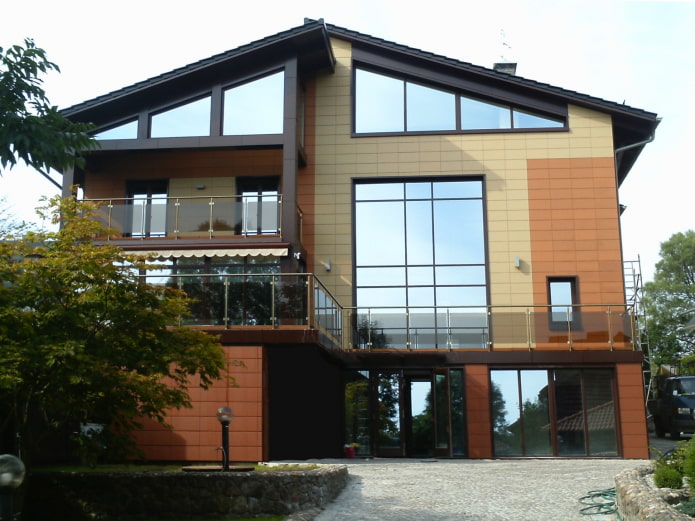
Metal support pillars
Forged metal pillars are already considered a full-fledged decorative element in themselves. For durability, they only need to be covered with primer and paint. Expressive supports will be accompanied by a forged canopy, railings, street lamps. The intricate pattern can be repeated in the design of the fence or on the front door leaf.
In modern design projects, they prefer not to mask pillars made of metal pipes. They emphasize the geometry of the architecture and play in favor of a discreet and stylish exterior.
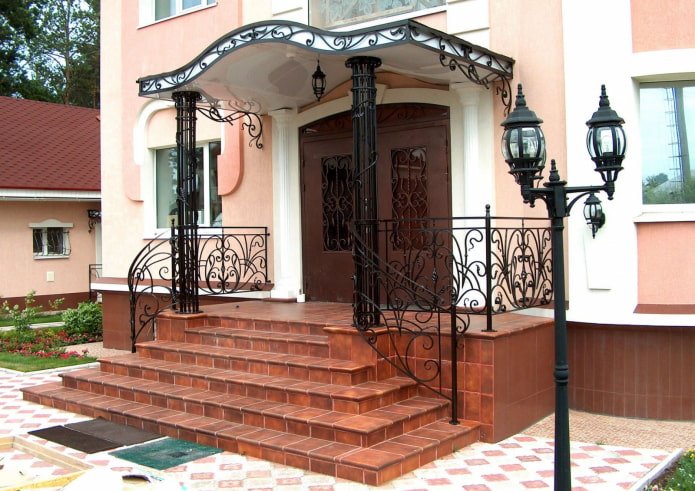

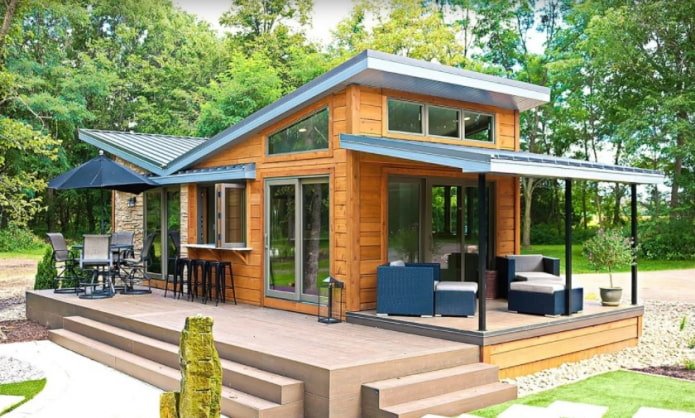
Stucco molding
Stucco decoration on the facade has been considered a sign of taste and wealth of the owners of the house for several centuries. Stone, concrete, gypsum, polyurethane and even foam are used as materials. The latter are lightweight, so they are especially often used to decorate columns, which are undesirable to have additional loads on. Stone and concrete significantly weigh down the structure, but are less susceptible to atmospheric influences and wear.
The nature of the stucco should be chosen in accordance with the general style of the architecture. The supporting pillars of a country house in the Baroque style can be decorated with shells, plant motifs, and figures of Atlanteans. For modernism, use asymmetry; for contemporary classicism, use moldings and flower garlands.
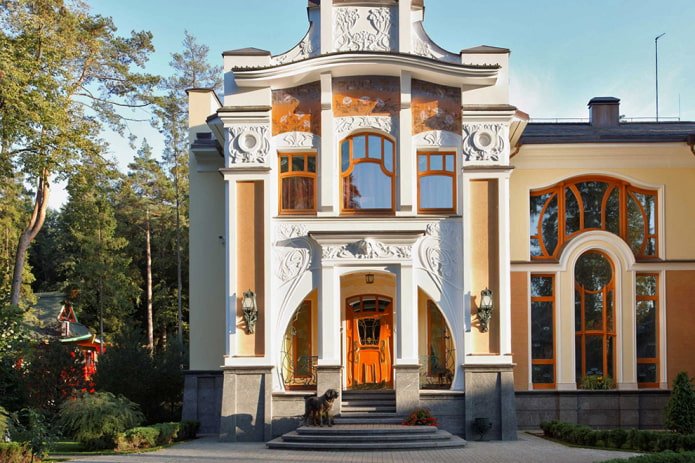
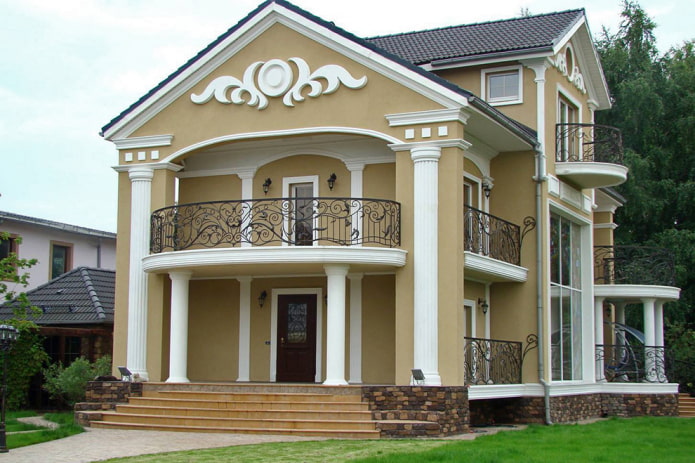
Wood
Wood can be used in several ways to decorate facade columns. These include full-fledged tree trunks, columns made of rounded timber, and strict, minimalist beams. Wood fits equally well into the space of a country chalet, small country-style houses or modern architecture.
When using several finishing materials in the design of the facade, the finishing of the supporting pillars can also be combined. The lower part is covered with brick or stone, and wood is left on top. The texture of the material is left to emphasize the eco-friendliness of the design or is completely painted to match the entrance door, roof or other elements of the facade.
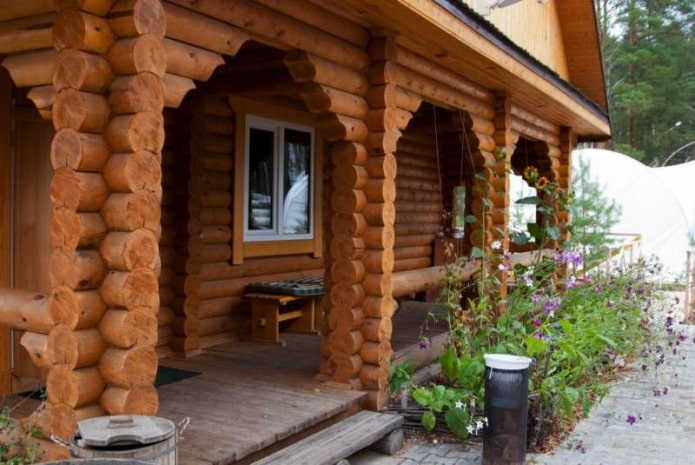
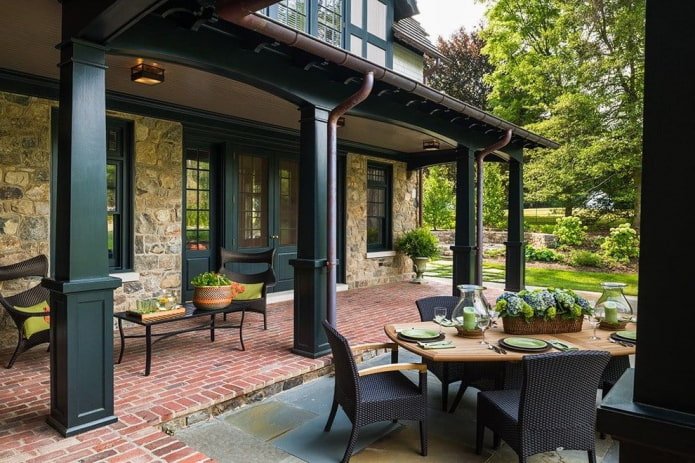
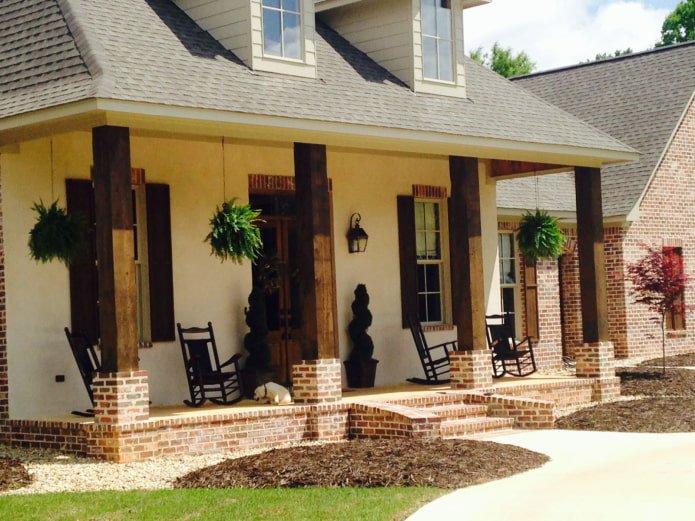
Carved decor
To decorate the facade of a house or gazebo in the traditional Russian style, it is appropriate to use carved supporting structures. The pattern on the post can be repeated in the balusters, the design of the canopy or balcony. It is better not to hide the texture of the wood, but it can be tinted with glazes or stain and varnished.
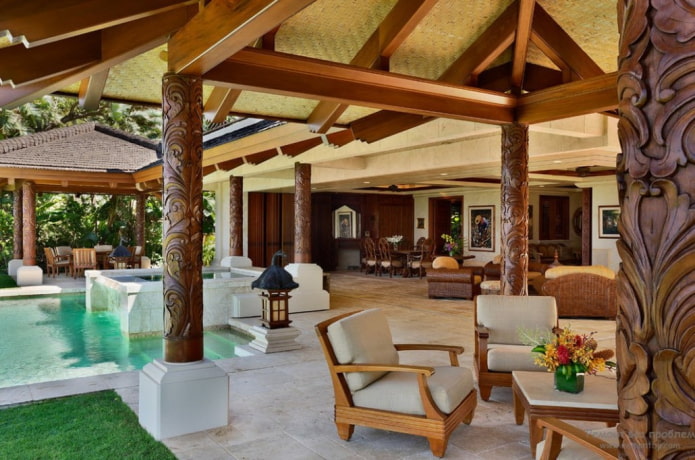
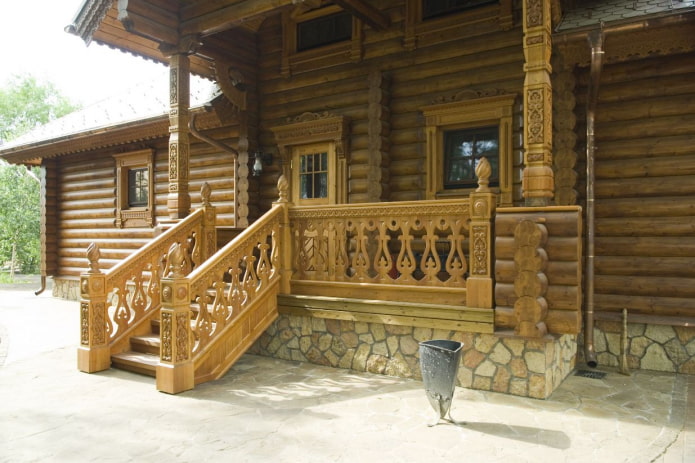
When choosing a finishing option for external supports, you should take into account the constant influence of precipitation, sun and wind on them. The material must be strong, durable, resistant to frost and moisture.
Now reading:
- 12 best unpretentious perennials for your summer house – plant them and forget about worries!
- Your Ultimate Guide to Buying a Dodge Used Car
- 10 creative ideas for decorating curtains with your own hands, adding coziness to the interior.
- Design 42 sq. m: more than 60 photos, layouts of one-room and two-room apartments.
- Decorating a Rectangular Room: Tips and 50 Photos for Inspiration.